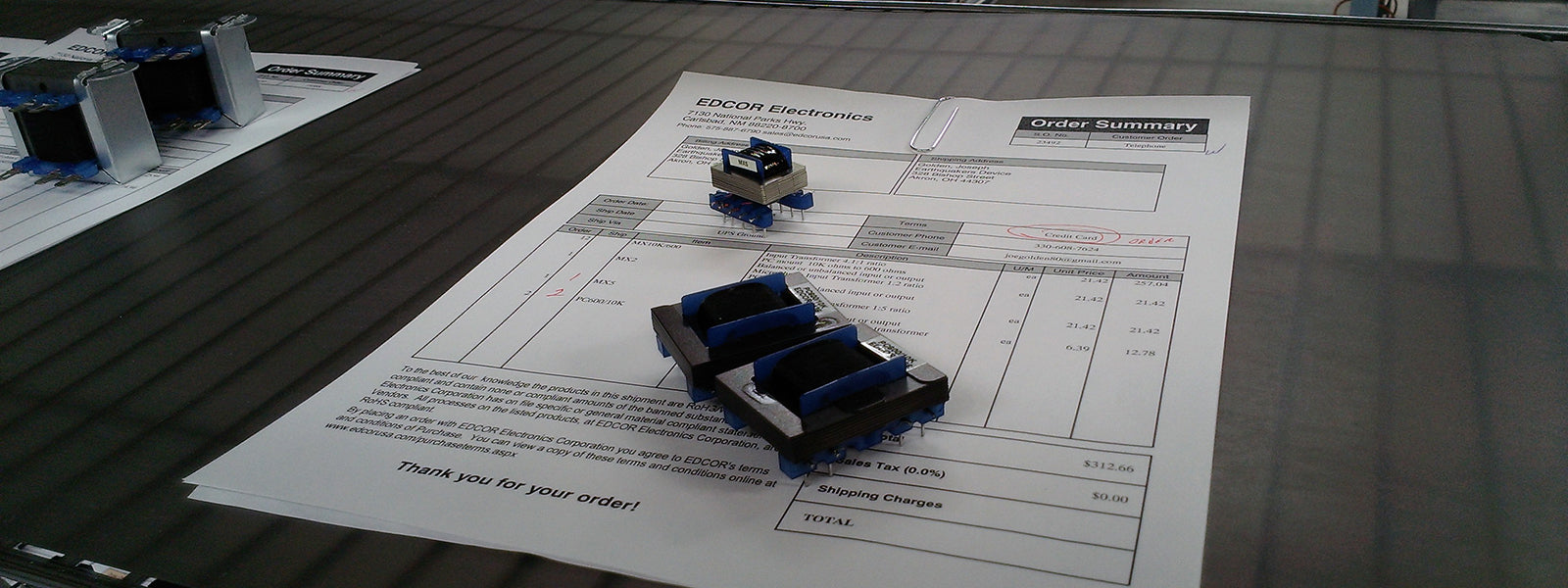
EDCOR uses FR-4 PCB material for all of their printed circuit boards.
Most printed circuit boards are manufactured using glass-reinforced epoxy laminate as the substrate. While there are a wide variety of laminates available on the market, FR-4 is both versatile and well-accepted as a standard material for PCB manufacture. FR-4 functions well as an electrical insulator, and has a good strength-to-weight ratio, and is flame resistant.
EDCOR uses single and double sided PC boards, ranging from 0.032" to 0.062" thickness. EDCOR's PC boards have a nickel solder flow. All materials are RoHS compliant.
Properties
Typical physical and electrical properties of FR-4 are as follows. LW (length wise, warp yarn direction) and CW (cross wise, fill yarn direction) refer to the fiber orientations in the plane of the board (in-plane) that are perpendicular to one another. The through-plane direction is also referred to as the z-axis.
| Parameter | Value |
|---|---|
| Specific gravity/density | 1.850 g/cm3 (3,118 lb/cu yd) |
| Water absorption | −0.125 in < 0.10% |
| Temperature index | 140 °C (284 °F) |
| Thermal conductivity, through-plane | 0.29 W/m·K,[1] 0.343 W/m·K[2] |
| Thermal conductivity, in-plane | 0.81 W/m·K,[1] 1.059 W/m·K[2] |
| Rockwell hardness | 110 M scale |
| Bond strength | > 1,000 kg (2,200 lb) |
| Flexural strength (A; 0.125 in) - LW | > 440 MPa (64,000 psi) |
| Flexural strength (A; 0.125 in) - CW | > 345 MPa (50,000 psi) |
| Tensile strength (0.125 in) LW | > 310 MPa (45,000 psi) |
| Izod impact strength - LW | > 54 J/m (10 ft·lb/in) |
| Izod impact strength - CW | > 44 J/m (8 ft·lb/in) |
| Compressive strength - flatwise | > 415 MPa (60,200 psi) |
| Dielectric breakdown (A) | > 50 kV |
| Dielectric breakdown (D48/50) | > 50 kV |
| Dielectric strength | 20 MV/m |
| Relative permittivity (A) | 4.8 |
| Relative permittivity (D24/23) | 4.8 |
| Dissipation factor (A) | 0.017 |
| Dissipation factor (D24/23) | 0.018 |
| Dielectric constant permittivity | 4.70 max., 4.35 @ 500 MHz, 4.34 @ 1 GHz |
| Glass transition temperature | Can vary, but is over 120 °C |
| Young's modulus - LW | 3.5×106 psi (24 GPa) |
| Young's modulus - CW | 3.0×106 psi (21 GPa) |
| Coefficient of thermal expansion - x-axis | 1.4×10−5 K−1 |
| Coefficient of thermal expansion - y-axis | 1.2×10−5 K−1 |
| Coefficient of thermal expansion - z-axis | 7.0×10−5 K−1 |
| Poisson's ratio - LW | 0.136 |
| Poisson's ratio - CW | 0.118 |
| LW sound speed | 3602 m/s |
| SW sound speed | 3369 m/s |
| LW Acoustic impedance | 6.64 MRayl |
[1] Azar, K; Graebner J. E. (1996). "Experimental Determination of Thermal Conductivity of Printed Wiring Boards". Proceedings of the Twelfth IEEE SEMI-THERM Symposium: 169–182.
[2] Azar, K; Graebner J. E. (1996). "Experimental Determination of Thermal Conductivity of Printed Wiring Boards". Proceedings of the Twelfth IEEE SEMI-THERM Symposium: 169–182.

